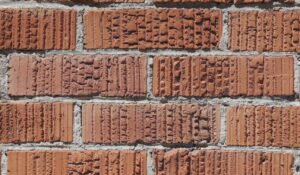
Time has a way of leaving its mark on everything it touches, and brick structures are no exception. Over years and decades, the elements — sun, rain, wind, and freeze-thaw cycles — begin to wear down even the sturdiest brickwork. A clean, proud, and sharp facade may now appear faded, cracked, or crumbling.
Brick restoration is a method that not only restores the aged masonry’s beauty but also maintains its structural integrity for many years to come.
The Importance of Maintaining Brick Buildings
Why Brick Is a Preferred Material
Due to their durability, fire resistance, and classic appearance, bricks have been a preferred building material for centuries. Brick plays a significant role in both the form and function of many older structures, particularly historic homes and commercial properties.
Challenges Over Time
However, mortar joints and the bricks themselves can become deteriorated by age, pollution, moisture, and structural movement, raising safety and aesthetic concerns.
Brick Restoration: More Than Just Repairs
Brick restoration goes beyond simple patchwork. It is a meticulous and skilled procedure that involves repairing, cleaning, and occasionally replacing bricks to ensure the structure maintains its original strength and appearance. This is especially crucial for
heritage buildings, where architectural integrity must be preserved.
What Is Involved in Brick Restoration?
A typical brick restoration project includes several key stages:
1. Evaluation and Inspection
Before any work begins, a thorough inspection is done to assess the extent of the damage. Restoration professionals look for:
- Spalling (flaking or breaking)
- Efflorescence (white salt deposits)
- Moisture damage
- Failing mortar joints
2. Cleaning
Years of grime, pollution, moss, and algae can alter a brick’s appearance. Specialized cleaning techniques like
low-pressure washing or
chemical treatments are used to remove buildup without damaging the brick.
3. Repointing
One of the most important steps in brick restoration is
repointing — removing damaged mortar and replacing it with new mortar that matches the old in color, composition, and texture. Proper repointing:
- Improves appearance
- Prevents water infiltration
- Maintains structural integrity
4. Repair and Replacement
Cracked or damaged bricks are repaired using fillers and sealants or replaced entirely. Matching new bricks with the originals is crucial, especially for historic restorations. This may involve:
- Creating custom bricks
- Sourcing recycled bricks
5. Sealing and Protection
A
breathable sealant is often applied to protect the brickwork from moisture and future damage. Unlike waterproof coatings, breathable sealants allow vapor to escape, preventing mold and freeze-thaw issues.
Why Restore Bricks Rather Than Replace Them?
Some property owners may wonder if tearing down and rebuilding is a better option. However, restoration offers several compelling benefits:
- Cost-effective: Significantly less expensive than full replacement
- Character preservation: Retains the original craftsmanship, especially in older buildings
- Environmentally friendly: Reduces waste and conserves materials
- Increased property value: Boosts curb appeal and market value
Selecting the Right Experts
Restoring bricks is both an art and a science. Choosing the right professionals is key to a successful outcome. Look for experts who:
- Specialize in masonry restoration
- Have a strong portfolio of similar projects
- Understand local climate and building codes
- Provide certifications, references, and detailed written estimates
When Should Brick Restoration Be Performed?
While every building is different, here are some common signs it’s time for a restoration:
- Visible cracks or gaps in mortar
- Missing or loose bricks
- Water stains, mold growth, or efflorescence
- Leaning or bulging walls
Addressing these issues early can prevent further deterioration and higher repair costs later on.
A Smart Investment in Longevity

Whether you own a charming brownstone, a historic church, or a classic commercial building,
Concrete Restoration is a smart, future-focused investment. It blends preservation and protection — restoring your building’s beauty while strengthening its structure.
It’s more than a cosmetic upgrade — it’s a commitment to
craftsmanship, sustainability, and lasting value. Brick has stood the test of time. With the right care, it can continue to tell your building’s story for generations to come.
 Time has a way of leaving its mark on everything it touches, and brick structures are no exception. Over years and decades, the elements — sun, rain, wind, and freeze-thaw cycles — begin to wear down even the sturdiest brickwork. A clean, proud, and sharp facade may now appear faded, cracked, or crumbling. Brick restoration is a method that not only restores the aged masonry’s beauty but also maintains its structural integrity for many years to come.
Time has a way of leaving its mark on everything it touches, and brick structures are no exception. Over years and decades, the elements — sun, rain, wind, and freeze-thaw cycles — begin to wear down even the sturdiest brickwork. A clean, proud, and sharp facade may now appear faded, cracked, or crumbling. Brick restoration is a method that not only restores the aged masonry’s beauty but also maintains its structural integrity for many years to come.
 Whether you own a charming brownstone, a historic church, or a classic commercial building, Concrete Restoration is a smart, future-focused investment. It blends preservation and protection — restoring your building’s beauty while strengthening its structure.
It’s more than a cosmetic upgrade — it’s a commitment to craftsmanship, sustainability, and lasting value. Brick has stood the test of time. With the right care, it can continue to tell your building’s story for generations to come.
Whether you own a charming brownstone, a historic church, or a classic commercial building, Concrete Restoration is a smart, future-focused investment. It blends preservation and protection — restoring your building’s beauty while strengthening its structure.
It’s more than a cosmetic upgrade — it’s a commitment to craftsmanship, sustainability, and lasting value. Brick has stood the test of time. With the right care, it can continue to tell your building’s story for generations to come.



